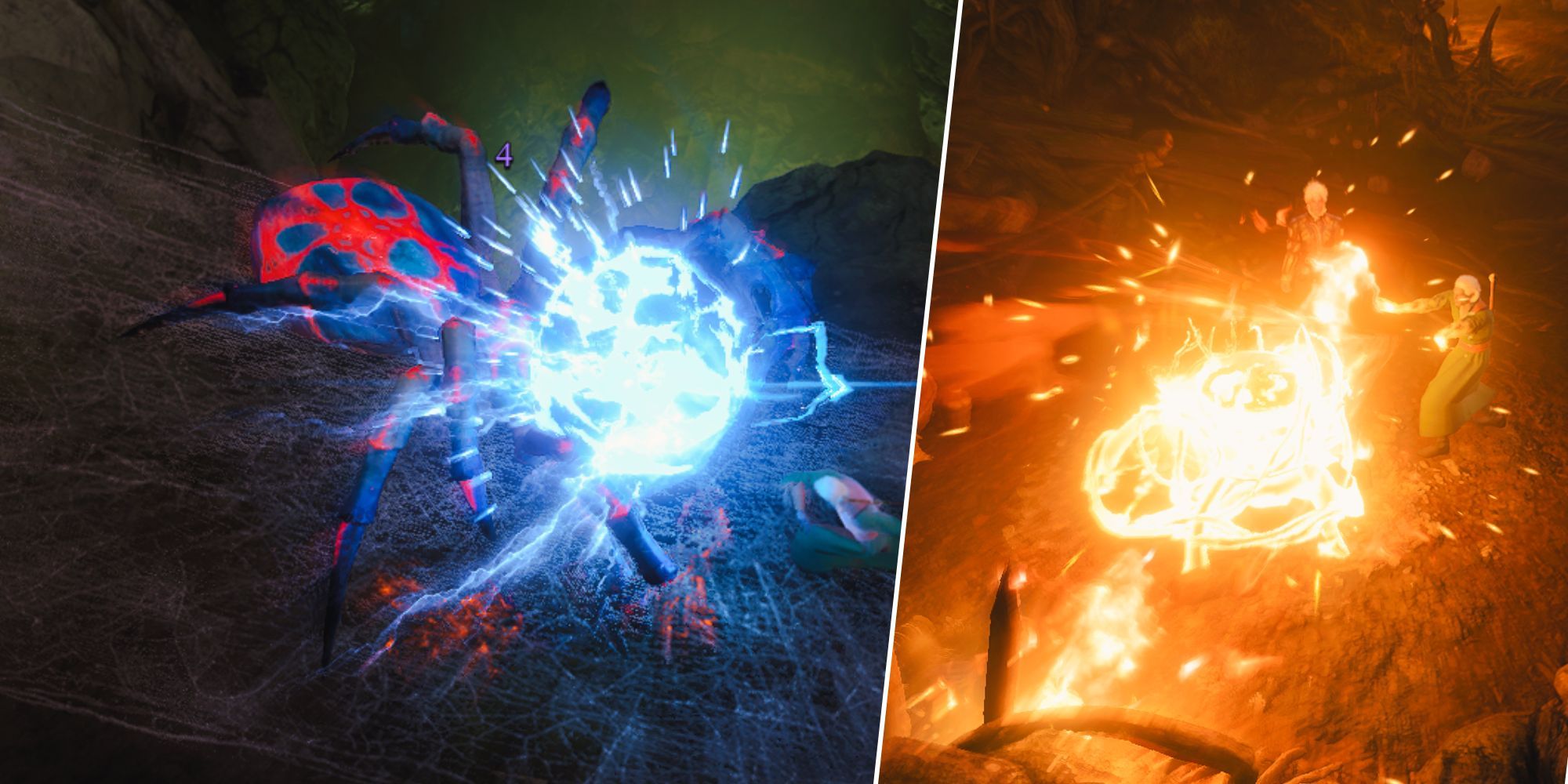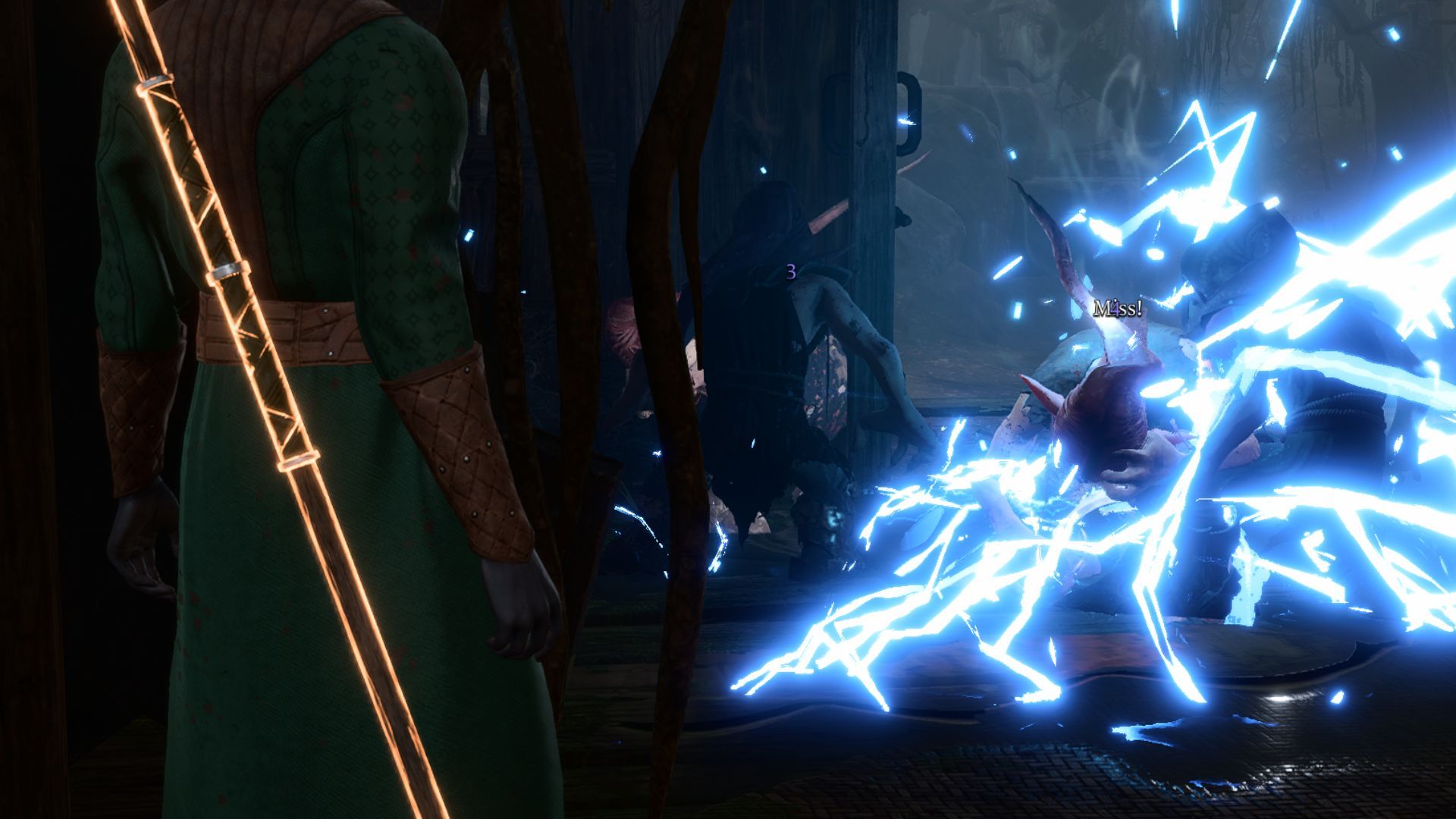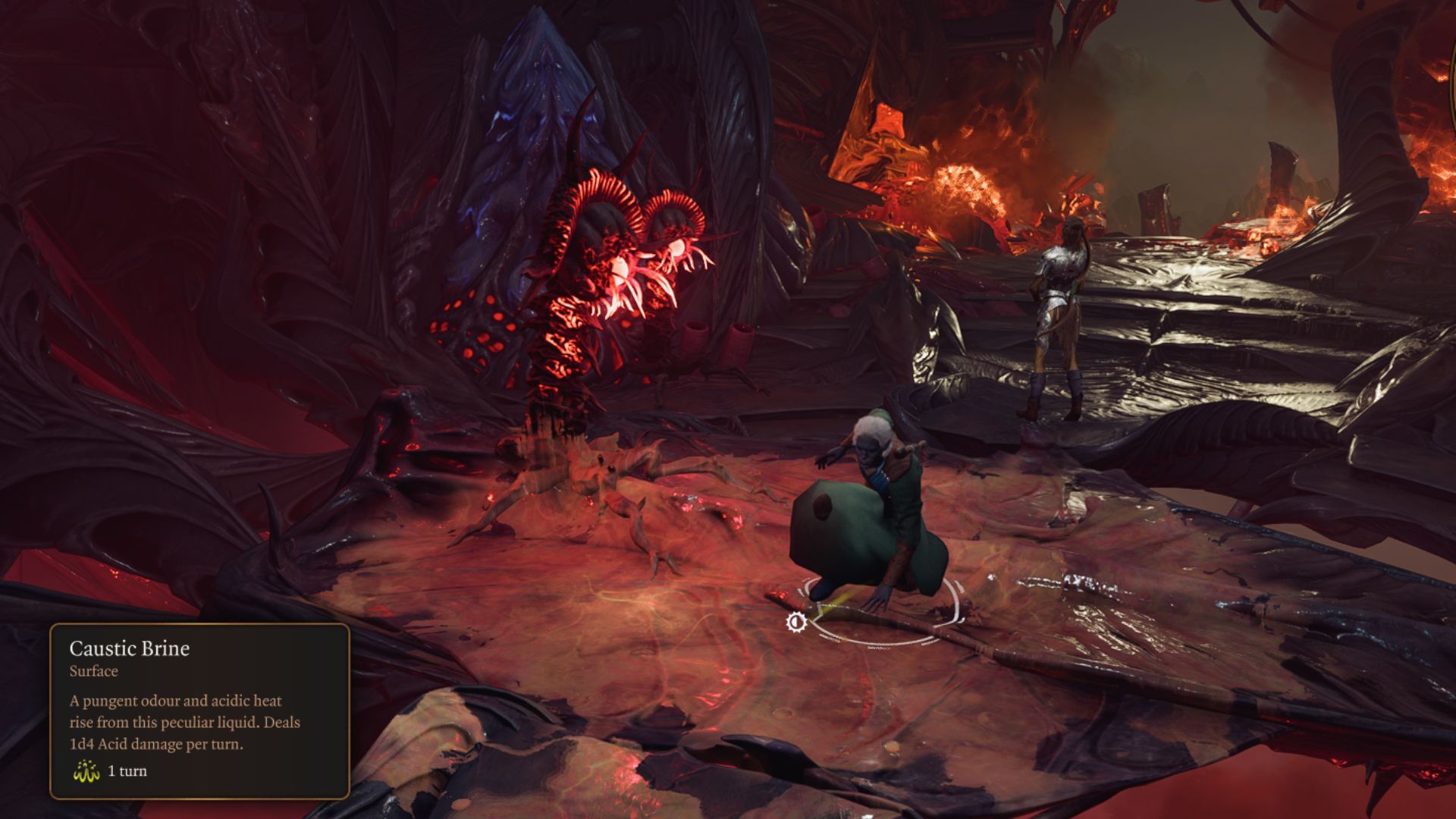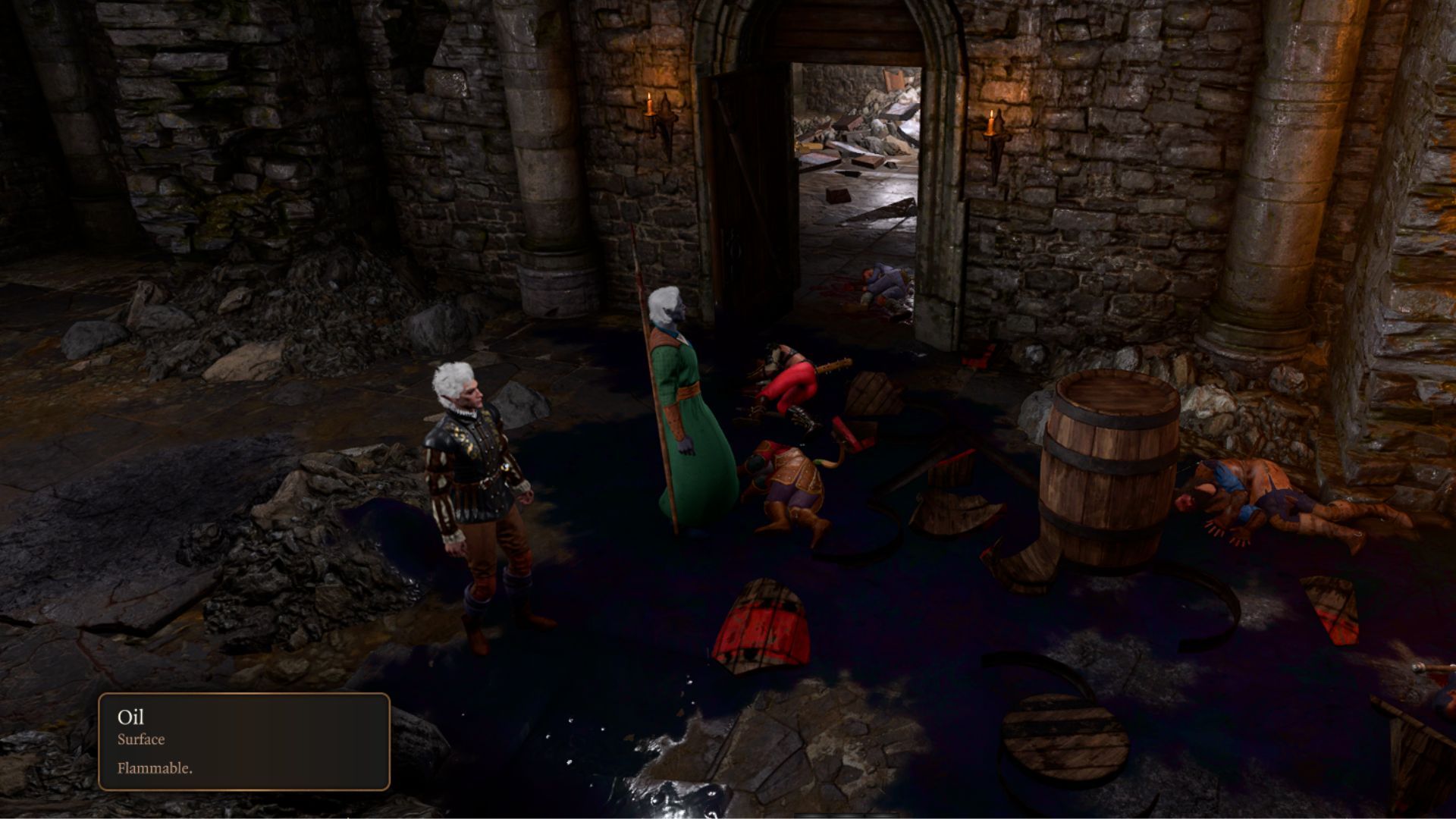Quick Links
In the rich and dynamic combat of Baldur's Gate 3, victory hinges not only upon the obvious factors of your foes and allies but also on the intricate battlefield environment. Factors such as items, structures and terrain—even the ground beneath your feet!—can affect the flow of combat just as much as your spells and swords.
Among these factors, Elemental Surfaces are perhaps one of the most prevalent. They can occur naturally—or as a result of your (or your enemies') actions—and can introduce a complex new layer of damage, control and debuff options that could completely change the course of battle.
What Are Elemental Surfaces?
If you've played the game at all, chances are you've encountered Elemental Surfaces before—maybe even used one to your advantage without knowing it. Even as you crawled out of your awful little torture pod on the Nautiloid, you might remember immediately coming face to face with a blazing fire that spanned much of the room.
Elemental Surfaces are substances that coat the surface of the terrain, inflicting buffs, debuffs, or damage on those who come in contact with them. Elemental Surfaces can further react with other elements—transforming into entirely new surfaces, or culminating in some sort of final effect as a result: like an explosion!
A thorough understanding the elemental reactions of Baldur's Gate 3 and clever usage of elemental combinations can swing any skirmish in your favor, and fast—whereas ignoring the terrain can lead to disastrous accidents at your expense.
Fire Surface
Interacts With | To Form / Inflict |
|---|---|
Creatures |
|
Water |
|
Ice |
|
Oil / Smokepowder |
|
When a creature steps into a Fire Surface, it applies the Burning condition, which deals 1d4 Fire damage at the start of the creature's turn. It also removes any Wet condition.
You can use the elements of water (for instance, in a barrel) or ice (for instance, with the Ray of Frost cantrip) to extinguish these surfaces, leaving behind steam or a water surface, respectively.
When fire comes into contact with oil or smokepowder (for instance, in barrels), it'll create a massive explosion.
When a fire is naturally extinguished over time, it leaves behind an ash surface that eventually fades away.
Ice Surface
Interacts With | To Form / Inflict |
|---|---|
Creatures |
|
Fire |
|
While not innately damaging or destructive, Ice Surfaces can still make a huge difference in the heat of battle. If a creature steps onto it, not only does it count as difficult terrain (halving their movement speed), but the creature may also fall prone.
Prone creatures are susceptible to melee attacks, as well as Strength and Dexterity saving throws.
Water Surface
Interacts With | To Form / Inflict |
|---|---|
Lightning |
|
Fire |
|
Ice |
|
A Water Surface can transform into steam when it comes in contact with Fire, and can freeze solid into an Ice Surface when it comes into contact with Ice.
More dangerously, however, Water surfaces will turn into an Electrified Water Surface when it comes in contact with Lightning.
Electrified Water Surface
Interacts With | To Form / Inflict |
|---|---|
Creatures |
|
Creatures that come into contact with an Electrified Water Surface receive the Electrocuted condition, which deals 1d4 Lightning damage to them at the start of their turns.
Mud Surface
Interacts With | To Form / Inflict |
|---|---|
Creatures |
|
Mud Surfaces are naturally occurring surfaces in wetland and swamp areas. They create difficult terrain, halving the movement speed of any creature trying to traverse it.
Acid Surface
Interacts With | To Form / Inflict |
|---|---|
Creatures |
|
Acid Surfaces apply the Acid condition, reducing the creature's Armor Class (AC) by 2. This can be a potential game-changer in a close battle.
Poison Surface
Interacts With | To Form / Inflict |
|---|---|
Creatures |
|
A Poison Surface applies the Poisoned condition, which imposes disadvantage to the creature's ability checks and attack rolls.
Naturally, this is also a huge detriment during both combat and exploration.
Caustic Brine Surface
Interacts With | To Form / Inflict |
|---|---|
Creatures |
|
Caustic Brine Surfaces inflict the Caustic Brine condition, causing 1d4 Acid damage per turn to creatures who step onto it.
Blood Surface
Interacts With | To Form / Inflict |
|---|---|
Ice |
|
Blood Surfaces are, as you might expect, produced when harm comes to a creature with blood (a Mud Mephit, which is an elemental, would not bleed, for instance). Much like Water Surfaces, they can extinguish Fire and can be frozen into Ice Surfaces. They cannot be electrified, however.
Steam
Interacts With | To Form / Inflict |
|---|---|
Creatures |
|
Steam Surfaces are formed when fire interacts with water.
Creatures entering these clouds become wet, becoming unable to burn and gaining resistance to Fire damage, but becoming extra vulnerable to Cold and Lightning.
Oil
Interacts With | To Form / Inflict |
|---|---|
Fire |
|
In Baldur's Gate 3, barrels aren't just scenery. Barrels of various substances can be found along your travels, and some are more volatile than others. Barrels of oil can be broken open to release a large swathe of oil that quickly covers vast amounts of terrain—and is, of course, very flammable.
The barrel itself can also be ignited directly with Fire damage, to cause a sizable burst of flaming oil that can take down entire hordes of foes all at once.
Alcohol
Interacts With | To Form / Inflict |
|---|---|
Fire |
|
Alcohol / Firewine functions nearly identically to Oil—it's also found in barrels all across Faerun and can be broken to release a highly flammable liquid.
Smokepowder
Interacts With | To Form / Inflict |
|---|---|
Fire |
|
Smokepowder is a higly volatile, magical equivalent of Faerûn's gunpowder. Smokepowder barrels act similarly to Oil barrels but have the potential to be much more destructive, as it's not just flammable but explosive.
Igniting a Smokepowder barrel will cause a massive explosion that deals massive Fire damage to everything around it.
Darkness
Though not technically an element, Darkness deserves a special mention as a terrain effect capable of turning the tides in combat.
Darkness is a second-level spell that can be learned by Sorcerers, Warlocks, Wizards and Oathbreaker Paladins. Players of the Drow race can also innately cast this spell once per day at level five.
This spell creates a cloud of magical Darkness that Heavily Obscures and blinds all creatures within the effect. Creatures also cannot make ranged attacks in or out of the cloud, making it a possible bulwark for squishier spellcasters to hide behind.
Darkness pairs incredibly well with the Eldritch Invocation, Devil's Sight, which allows the invocation-holder alone to see through the Darkness while all of their foes remain blinded by the smoke.



















